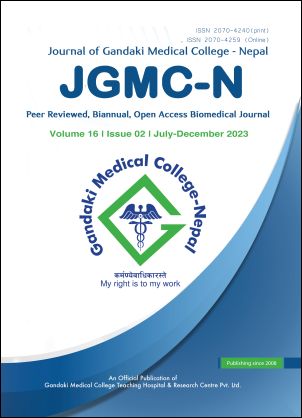Established in 2007 and hosted by Ubiquity.
Managed by Tribhuvan University Central Library.
Nepal Journals Online (NepJOL) is a service to provide online publication of Nepalese journals. For more information about NepJOL and how to join the service, see the About page.

An official publication of the Gandaki Medical College Teaching Hospital & Research Centre Pvt. Ltd.
Journal of Gandaki Medical College-Nepal (JGMC-N) is indexed in the Research4Life, Directory of Open Access Journals (DOAJ), NepJOL, NepMed and Google Scholar.

